
North America

Europe

Latin America

Asia Pacific

Africa

Middle East

North America

Europe

Latin America

Asia Pacific

Africa

Middle East
Sustainability has become a major talking point in agriculture. It’s a term you might hear in meetings, read in advertisements, or see referenced in industry discussions. But is it just a marketing buzzword, or does it truly reflect a movement toward sustainable agriculture? More importantly, what does sustainability mean for dairy farming and livestock production?
While it may seem like sustainability has always been a part of our conversations, the term only gained prominence in the 1970s. At its core, sustainability is about meeting the needs of today without compromising the ability of future generations to meet theirs. In agriculture, this means conserving resources, minimizing waste, and protecting ecosystems, all while ensuring consistent food production.
When applied to livestock, sustainability becomes even more complex. It’s not just about environmental stewardship; it involves balancing animal health and welfare, financial profitability, social responsibility, and food quality. These five sustainability pillars create a framework that dairy farmers can use to drive long-term success while caring for their animals, their communities and the planet.
The world faces immense challenges in feeding a growing population. By 2050, the global population is expected to grow by 2.3 billion people, requiring 60% more food production. Livestock farm animals play a critical role in meeting these needs by providing high-quality, nutrient-dense foods such as meat, milk and other dairy products.
Dairy farms are integral to rural economies and communities, creating jobs and supporting livelihoods. In the United States alone, agriculture and related industries account for over 10% of jobs. Dairy farms contribute to this by providing employment and boosting local economies through processing plants, supply chains and more.
Sustainability also extends to food security, ensuring both the quality and quantity of food. By producing safe, nutritious milk and other products, dairy farms support healthy diets and meet the nutritional needs of a growing population.
Sustainability doesn’t need to be an abstract concept; many dairy farmers are already implementing sustainable practices. These include:
These actions not only enhance the environmental footprint of dairy farming but also improve financial profitability and community well-being.
Sustainability isn’t just about the planet — it’s about people, animals, and the systems that connect them. As dairy farmers work to improve animal welfare, adopt new technologies and protect natural resources, they’re actively contributing to a sustainable future.
If you care about your animals, want a thriving operation, and believe in producing safe, nutritious milk, you’re already embracing sustainability. Every small step — from managing manure to conserving water — builds a better future for the dairy industry and the world.
About the authors:

Dr. Sebastian Mejia Turcios is an on-farm support specialist at Alltech with a focus on beef. In this role, he actively engages with others at various levels of the beef industry on topics related to sustainability.
Mejia Turcios is passionate about sharing his knowledge and research with industry leaders, producers, educators and other stakeholders in animal agriculture. Born and raised in Honduras, Mejia Turcios became involved in agriculture at an early age, with a particular love for livestock — which eventually became the focus of his studies. He earned a bachelor’s degree in agronomy from EARTH University in Costa Rica and a master’s degree in animal science from Texas Tech University.
Mejia Turcios completed his Ph.D. in June 2024 at the University of California, Davis, under the direction of Dr. Frank Mitloehner, an internationally known professor of animal agriculture who is also an air-quality expert and director of the CLEAR Center at UC Davis.

Jorge Delgado is an on-farm specialist at Alltech, where he focuses on empowering dairy workers for the benefit of the entire industry.
Originally from Ecuador, Delgado comes from a family of dairy farmers. Before joining Alltech, he offered consulting, sales and training services for an Ecuadoran genetic company and also served as a herd manager for multiple dairies in the United States. He has also worked with Elanco’s Dairy Training Program.
Delgado received a bachelor’s degree in agriculture and dairy science from EARTH University in Costa Rica. He and his family currently live in Minneapolis, Minnesota.
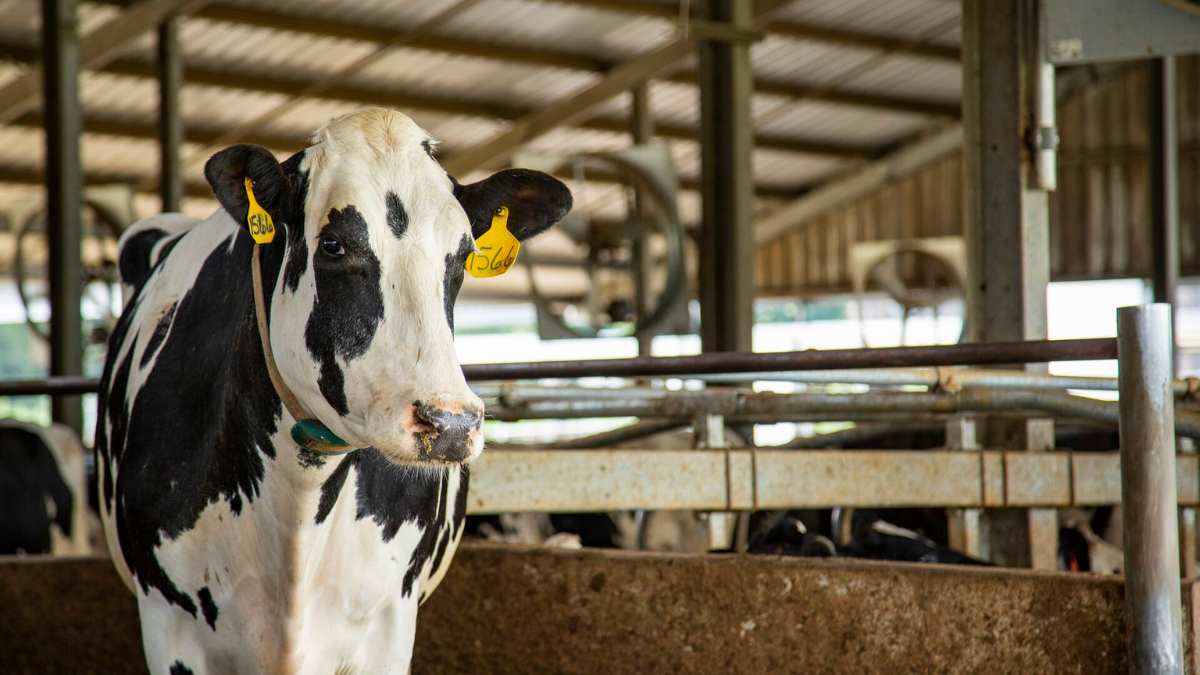
2024 has presented different challenges for the corn crop. It started with record to near-record spring rainfall across the upper Midwest, leading to late planting, drown-outs and replanting. This delayed the crop’s maturity. In June, the rain stopped, and the crop became uneven, needing heat. As temperatures rose across the Midwest, the corn responded well, but in the east, drought hit it hard. Some ear rot developed, and tar spot was heavy in parts of the Midwest and the Ohio Valley.
Corn health ranged from excellent to poor across the U.S. When harvest began in the Midwest, the weather was excellent, with dry conditions, allowing for a rapid harvest. Corn was coming out of the field dry, needing little to no drying. The USDA reported a yield of 15.2 billion bushels or 183.8 bu./acre, slightly less than the 2023 crop but still significant.
However, many samples showed high kernel damage and foreign matter content. This could make the corn more susceptible to drawing moisture and mold growth during storage, increasing the risk of mycotoxin development. Proper storage management is crucial for maintaining the quality of corn used in pig feed and other livestock feed.
Analysis of corn grain found an average of 7.8 mycotoxins per sample, higher than the 2023 crop's 4.5 mycotoxins per sample. Mycotoxins have no safe level, meaning even low levels can pose risks. The most common mycotoxin groups were emerging mycotoxins (found in 100% of samples), fumonisins (86.7%), type B trichothecenes (81.9%), and fusaric acid (80.0%). Zearalenone was present in 46.7% of the samples. These mycotoxins, produced by Fusarium molds, can significantly impact swine health, affecting feed intake, digestion, conception rates and more.
On average, mycotoxin levels were mostly moderate in risk: type B trichothecenes at 382 ppb, emerging mycotoxins at 168 ppb, fumonisins at 1,371 ppb, and fusaric acid at 105 ppb. However, maximum levels were much higher, with type B trichothecenes at 3,702 ppb, emerging mycotoxins at 8,313 ppb, fumonisins at 27,597 ppb, and fusaric acid at 1,931 ppb. These mycotoxins can act synergistically, increasing their negative impact on pig feed.
Alltech produces a risk equivalent quantity (REQ) to estimate the total risk from all mycotoxins (7.8 /sample on average) present, rather than just 1 or 2 mycotoxins to estimate risk. For sows, the 2024 corn crop had an average REQ of 63.7 and a maximum of 554. With normal corn inclusion rates into the diet(s), the average mycotoxin risk in finished feeds is moderate, but maximum levels can generate higher risks.
The risk that 2024’s corn represents increases from west to east, with the greatest risk found in the Ohio Valley and Delmarva.
Storage management is crucial to prevent mycotoxin development, especially for the 2024 crop. It is highly recommended to continue testing corn for mycotoxins throughout the storage period to monitor any potential changes due to mold and mycotoxin development. Then, you can know you’re making informed decisions for your mycotoxin management program.
About the author:

Dr. Max Hawkins offers global technical support at Alltech. In this role, he provides technical support directly to Alltech’s customers, as well as the Alltech Feed Division and the company’s sales, beef and swine teams.
Hawkins has dedicated his career to providing the livestock industry with up-to-date information about the mycotoxin risk around the world. Before joining Alltech, Hawkins taught animal science at Morehead State University and animal nutrition and production at California Polytechnic State University, where he also coached the school’s livestock judging team. As the director of genetic outreach for the National Purebred Swine Registry, he led the group’s field staff and helped producers develop their genetic and performance programs. Hawkins previously served as a technical consultant for the Continental Grains Wayne Feed Division. He also offered sales and technical support at Micron Bio-Systems, with a special focus on mycotoxin management, forage inoculants and probiotics.
Hawkins received a bachelor’s degree from Western Illinois University and both master’s and doctoral degrees from the University of Tennessee. While completing his studies at the University of Tennessee, he coached the university’s livestock judging team and taught livestock production classes.
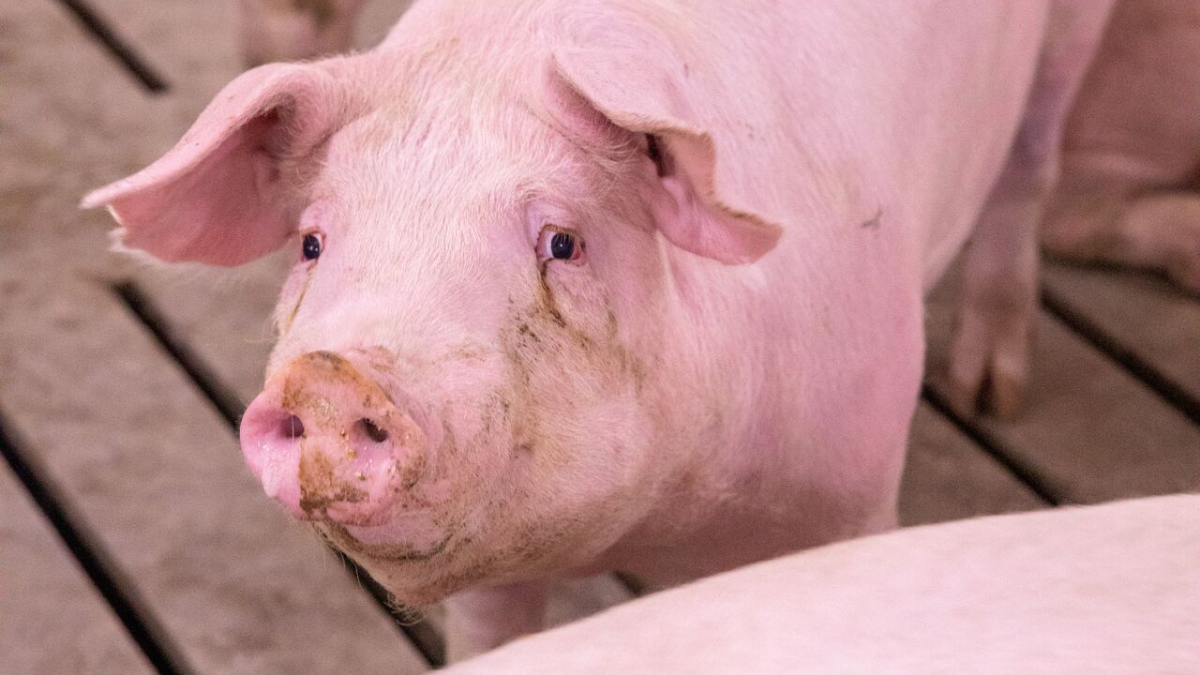
[Lexington, Kentucky] - Alltech ha presentado su Informe de Sostenibilidad anual, el cual da a conocer las acciones que la compañía está adoptando para alinear su negocio con su propósito de Trabajar juntos por un Planeta de Abundancia®: reducir su impacto ambiental y promover los Objetivos de Desarrollo Sostenible de las Naciones Unidas.
Alltech es una empresa comprometida con impulsar la producción eficiente y rentable de alimentos nutritivos; al mismo tiempo que ayuda a los productores de todo el mundo a adoptar tecnologías que les permitan abordar sus desafíos en sostenibilidad y productividad. El Informe de Sostenibilidad de Alltech destaca que Trabajar juntos por un Planeta de Abundancia® impulsa el negocio de la compañía y su futuro.
“Todo lo que hacemos está enfocado en promover nuestro propósito de Trabajar juntos por un Planeta de Abundancia”, señaló Tara McCarthy (vicepresidenta global de Ambiente, Sociedad y Gobierno corporativo - ASG en Alltech). “Hemos avanzado mucho en nuestras metas de ASG, pero sabemos que siempre queda trabajo por hacer. Los miembros del equipo global de Alltech han demostrado un firme compromiso con las prácticas empresariales sostenibles y éticas. Y seguimos buscando objetivos de ASG desafiantes, áreas de mejora e innovación, y fomentar una cultura de sostenibilidad”.
Con el fin de construir un Planeta de Abundancia®, Alltech se ha comprometido con:
A través de la presentación de datos y de las acciones de los trabajadores de Alltech, este Informe de Sostenibilidad 2023 destaca el papel del sector agropecuario frente al cambio climático y el desarrollo de sistemas alimentarios saludables y sostenibles. También incluye información sobre las metas de reducción de las emisiones de la compañía y subraya sus esfuerzos por mejorar el uso de energía, reducir residuos y promover medidas ambientales en toda la industria. Asimismo, el documento da a conocer las políticas que Alltech ha adoptado para promover un entorno de trabajo diverso e inclusivo, y las iniciativas de los miembros de su equipo para marcar la diferencia en las comunidades en las que viven y trabajan.
En 2023 se destaca que:
“2023 fue otro año importante para Alltech; ya que promovimos nuestra misión y visión de Trabajar juntos por un Planeta de Abundancia”, destacó el Dr. Mark Lyons (presidente y CEO de Alltech). “En los 5 años transcurridos desde su presentación en la Conferencia ONE de Alltech, en Kentucky, un Planeta de Abundancia se ha convertido en un impulsor estratégico de nuestra empresa y de lo que es aún más importante: de nuestro impacto. A través de nuevas alianzas y colaboraciones ya establecidas con aliados de confianza (con los que hemos trabajado durante décadas) seguimos avanzando hacia nuestro objetivo compartido de construir un mundo de abundancia para las generaciones futuras”.
Alltech es un referente en la industria al promover la innovación y resaltar la importancia de este sector para la alimentación del mundo y la nutrición del planeta. A través de publicaciones como la encuesta Sustainability Insights, su Informe de Sostenibilidad anual, el Agri-Food Outlook, su Análisis de Cosechas, su Evaluación de Riesgos de Importaciones, entre otras; la empresa se ha convertido en un actor importante en el negocio y ayuda a abordar algunos de los desafíos más importantes que enfrenta la comunidad agroalimentaria.
A través de reportajes, podcasts, artículos o videos en su sitio web Planeta de Abundancia, Alltech muestra el poder de la ciencia para alcanzar la sostenibilidad en la industria. Y este año se estrenó el primer largometraje documental producido por Planeta de Abundancia, titulado Un mundo sin vacas, una investigación de 3 años sobre el verdadero impacto del ganado sobre nuestro mundo.
Este documental lleva a los espectadores a más de 40 lugares de todo el mundo para conocer las opiniones de destacados científicos, productores, economistas y otros expertos sobre la importancia cultural y económica del ganado, su papel en la alimentación del mundo y su impacto sobre el clima. Su objetivo es ampliar el debate sobre la función del ganado y generar una reflexión más profunda sobre su rol en el bienestar de nuestro planeta. Para más información ingrese a worldwithoutcows.com.
Para más información y para descargar completo el Informe de Sostenibilidad 2023 de Alltech, visite alltech.com/sustainability.
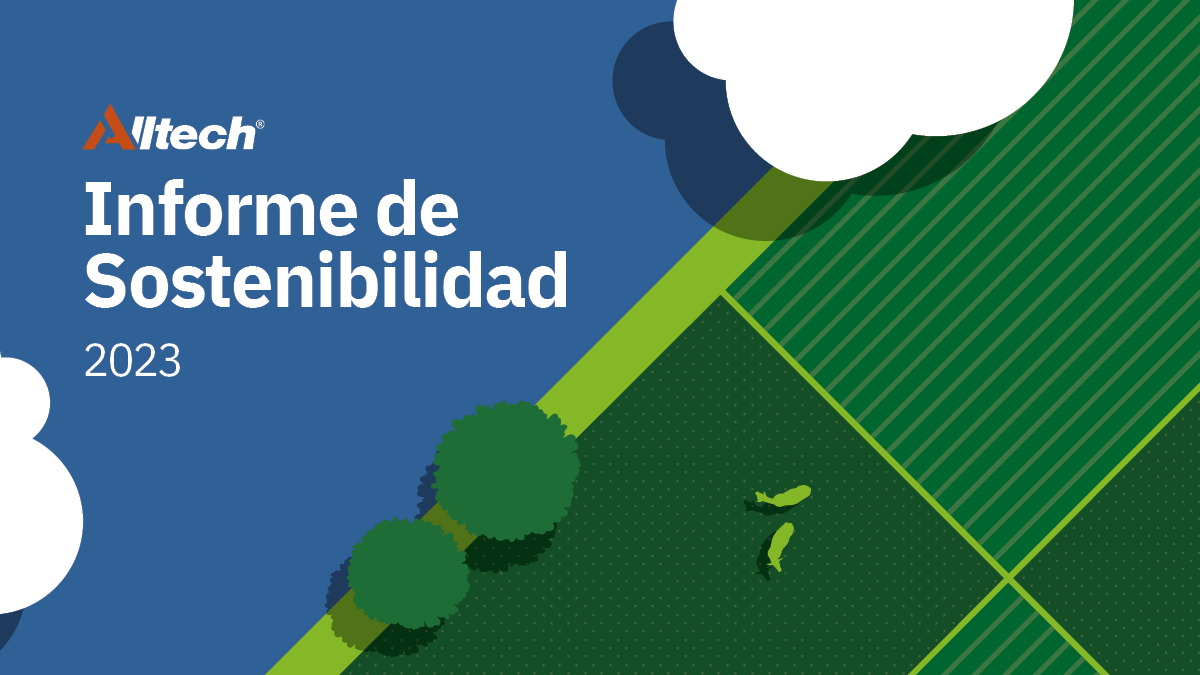
[Lexington, Kentucky] A Alltech investiu US$ 3,85 milhões em projetos de eficiência energética em 2023, que resultaram na redução de 8.990 toneladas (t) de CO2e. Este é um dos destaques do Relatório de Sustentabilidade anual divulgado pela líder global no setor agropecuário, que possui uma das maiores plantas mundiais de fermentação de leveduras para nutrição animal e de plantas no Brasil, no município de São Pedro do Ivaí (PR). O documento detalha as ações que a empresa está implementando para alinhar seus negócios com o propósito global de Trabalhar juntos por um Planeta de Abundância™.
Com a adoção destas medidas, a empresa reduz seu impacto ambiental e contribui para os Objetivos de Desenvolvimento Sustentável das Nações Unidas. A Alltech está comprometida em priorizar a produção eficiente e rentável de alimentos nutritivos, ajudando produtores em todo o mundo a implementar soluções para seus desafios de sustentabilidade e produtividade.
"Tudo o que fazemos tem como foco nos ajudar a avançar em nosso propósito de Trabalhar juntos por um Planeta de Abundância", disse Tara McCarthy, vice-presidente global de ESG da Alltech. "Alcançamos um progresso significativo em direção às nossas metas de ESG, mas sabemos que sempre há mais trabalho a ser feito”, avaliou. Segundo Tara, os membros da equipe Alltech em todo o mundo têm demonstrado um compromisso inabalável com práticas de negócios sustentáveis e éticas. “Continuamos a buscar metas ambiciosas de ESG, identificar áreas para melhoria e inovação e fomentar uma cultura de sustentabilidade."
Guiada por seu propósito de um Planeta de Abundância, a Alltech está comprometida em:
Por meio de dados e histórias de membros da equipe Alltech em todo o mundo, o Relatório de Sustentabilidade de 2023 da empresa enfatiza o papel da agropecuária no combate às mudanças climáticas e na criação de sistemas alimentares saudáveis e sustentáveis. O documento também inclui informações sobre as metas de redução de emissões da Alltech e destaca seus esforços para melhorar o uso de energia, reduzir o desperdício e promover ações ambientais no setor. Além disso, o relatório descreve as medidas adotadas para promover um ambiente de trabalho diversificado e inclusivo e demonstra os esforços dos membros de sua equipe para fazer a diferença nas comunidades em que vivem e trabalham.
Os pontos-chave de 2023 incluem:
"2023 foi outro ano marcante para a Alltech, pois avançamos em nossa missão e visão de Trabalhar juntos por um Planeta de Abundância", disse o Dr. Mark Lyons, presidente e CEO da Alltech. "Nos cinco anos desde que foi lançado na Alltech ONE Conference em Kentucky, o Planeta de Abundância se tornou um impulsionador estratégico de nossos negócios e um acelerador do que é ainda mais importante: nosso impacto. Por meio de novas parcerias e colaboração contínua com aliados com os quais trabalhamos há décadas, continuamos a impulsionar o progresso em direção ao nosso objetivo comum de um mundo de abundância para as gerações futuras."
A Alltech continua a servir como uma voz para a indústria, promovendo a inovação agroalimentar e destacando o papel da agropecuária em nutrir o mundo e proteger o planeta. Por meio de publicações como a Pesquisa Alltech Sustainability Insights, o Relatório de Sustentabilidade da Alltech, o Agri-Food Outlook, a Análise de Colheita, a Análise de Risco de Importação e outras, a empresa atua como líder de pensamento do setor e ajuda a abordar alguns dos problemas mais urgentes enfrentados pela comunidade agroalimentar.
A Alltech compartilha os avanços da ciência em prol da sustentabilidade no setor agroalimentar por meio de histórias, podcasts, blogs e vídeos em seu site Planeta de Abundância. Neste ano, foi lançado o primeiro documentário de longa-metragem do Planeta de Abundância, World Without Cows (Um mundo sem vacas), resultado de três anos de investigação do verdadeiro impacto dos bovinos em nosso mundo.
O documentário leva os espectadores a mais de 40 destinos ao redor do mundo para ouvir perspectivas dos principais cientistas, produtores, economistas e outros especialistas sobre o significado cultural e econômico dos bovinos, seu papel na nutrição do mundo e seu impacto no clima. Um mundo sem vacas tem como objetivo ampliar a conversa sobre o papel desses animais e inspirar uma reflexão mais profunda sobre seu papel na vitalidade do nosso planeta. Saiba mais em worldwithoutcows.com.
Para mais informações e para baixar o Relatório de Sustentabilidade Alltech 2023 na íntegra, acesse https://www.alltech.com/pt-br/sustentabilidade
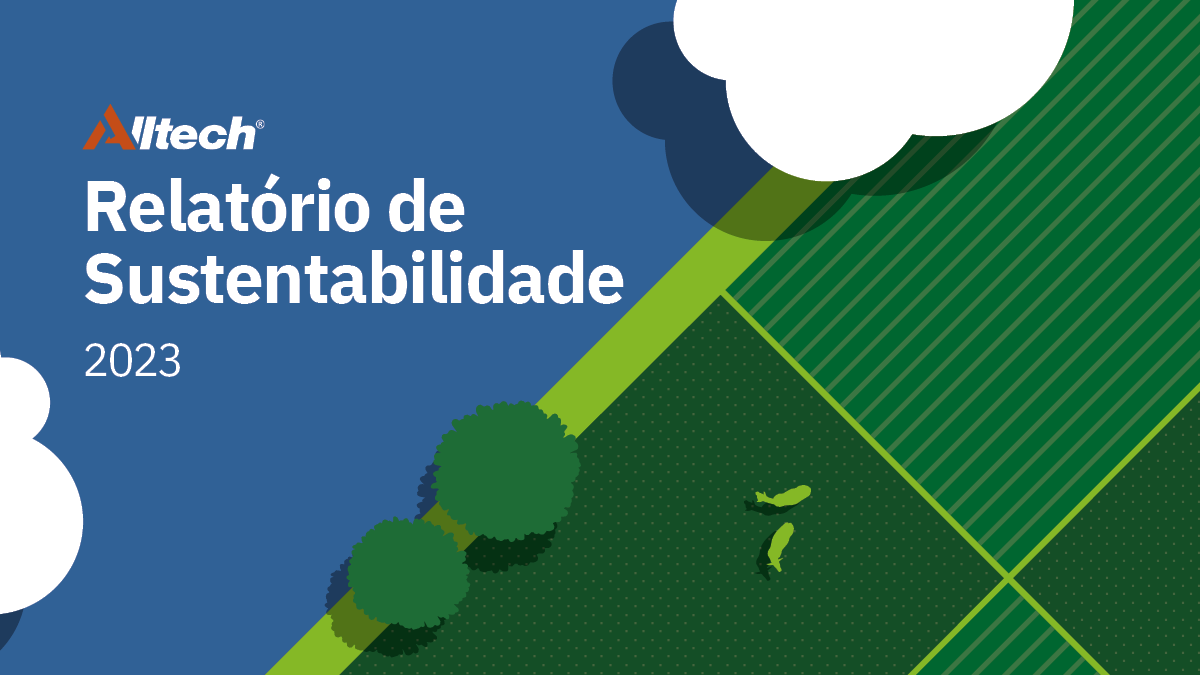
Hector Lobato of Schilling Farms in Darlington, Wisconsin, is this year’s award recipient
[JUNEAU, Wis.] – Alltech Wisconsin is pleased to present the 2024 Most Valuable Employee (MVE) Award to Hector Lobato of Schilling Farms in Darlington, Wisconsin. This award recognizes one outstanding dairy farm employee in Wisconsin, Minnesota or northern Illinois each year. Nominations are made by a farm manager, dairy owner, farm consultant or nutritionist based on qualities such as work ethic, perseverance, honesty and integrity.
The finalists were honored during the annual Alltech Dairy Summit on Thursday, Dec. 12, in Green Bay, Wisconsin.
“Alltech is proud to honor Hector as this year’s Most Valuable Employee Award winner for his hard work and dedication to Schilling Farms for the past 18 years,” said Jorge Delgado, manager of the Alltech Training, Talent Development and Retention Program for Dairy Workers (Alltech T²R Program). “This award is designed to recognize the people behind the cows and their exceptional work ethic and integrity, and Hector is most deserving of this honor.”
Hector was nominated by his employers, the Schilling family, who said, “Hector can be best described as dedicated. He comes to work every day with a smile and ready to do his absolute best. We have been fortunate enough to have Hector working alongside us for the last 18 years.
“Hector's attitude and drive is what makes him such an asset. He is ready to help in the parlor, train new employees, and is known to be one of cleanest guys at the farm. We have been fortunate to watch Hector's family grow up, as we have watched his children graduate high school and now see Hector as abuelo to his granddaughter.
“Hector has taken a new role in employee management, and we value the knowledge he has and his commitment to doing it right. Hector takes pride in caring for the cows, employees and the farm. Success would not be possible without Hector and his dedication, and we are thankful he is part of Schilling Farms.”
The other finalists honored during the Alltech Dairy Summit included Monte Guenther of Hil-Ray Farms in Minnesota City, Minn., and Fernando Maceda of Wayside Dairy in Greenleaf, Wis.
“The best employees add value to the dairy by thriving in their roles, maintaining their responsibilities, creating a safe and positive work environment for their coworkers, and speaking highly of their employers, both on and off the farm,” Delgado said. “When dairy farms and their employees develop long-term relationships and celebrate each other’s hard work, everyone involved reaps valuable benefits.”
For more information about the Alltech Wisconsin MVE Award, visit this link or contact AlltechWisconsin@alltech.com.
-Ends-
Video: https://creative.alltech.com/share/F549AEC8-5148-4C7E-A1208705402D1CA2/
Download image: https://creative.alltech.com/share/FAED2FBE-01D7-4C6F-A4EDFFC5590593F5/
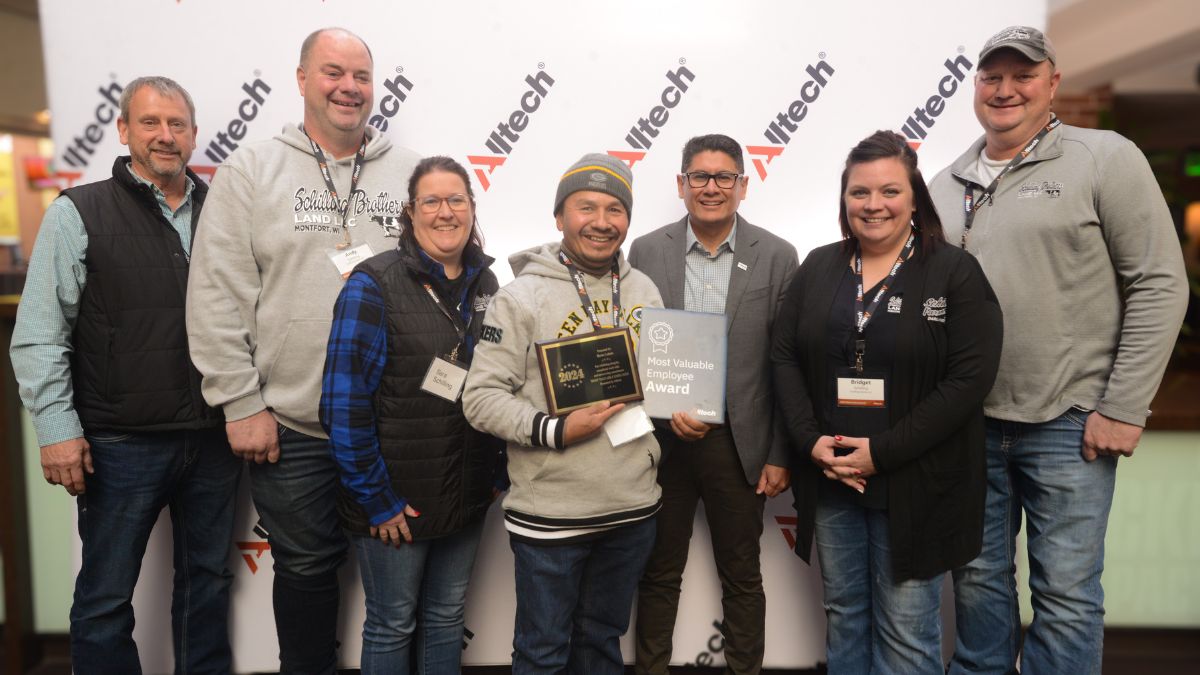
Jorge Delgado of Alltech and Schilling Farms honored Hector Lobato with the 2024 Most Valuable Employee (MVE) Award.
Alltech, líder mundial en biotecnología, ha publicado el informe completo del Análisis de Cosechas Europeas de Alltech 2024. Este informe muestra que la combinación de fuertes lluvias al principio de la temporada con la sequía del final ha supuesto desafíos claros para los productores de cosechas en el centro y sudeste de Europa con un riesgo general de presencia de micotoxinas de moderado a alto.
“En general, este año los cereales europeos pueden tener un riesgo similar o mayor en comparación con el pasado. Los tricotecenos de tipo B son las micotoxinas predominantes en el ensilado de maíz y la paja, mientras que las micotoxinas de Penicillium son la principal causa de riesgo en los ensilados de hierba”, afirmó la Dra. Radka Borutova, soporte técnico global del Grupo de Tecnología de Alltech. “En conjunto, estas micotoxinas podrían afectar el rendimiento y la salud de los animales, por lo que los productores deben ser conscientes de estos desafíos para ser proactivos en sus estrategias de gestión de micotoxinas”.
El riesgo final de micotoxinas dependerá en última instancia de las especie animal de los grupos de alimentos y de las concentraciones de micotoxinas y sus combinaciones en la dieta final.
Las micotoxinas, que son sustancias naturales producidas por mohos y hongos, son más frecuentes que nunca y suponen un mayor problema en la agricultura. Hoy en día, más del 95% de los cultivos están contaminados con al menos una micotoxina y, normalmente, con dos o más. Debido a que estas toxinas son difíciles de detectar, pueden causar daños significativos en la salud del animal, incluso antes de que los productores se den cuenta de su presencia. Un programa proactivo de gestión de micotoxinas es esencial y el primer paso es aprender qué micotoxinas representan el mayor riesgo en regiones, cultivos y especies específicas.
El programa del Análisis de Cosechas Europeas de Alltech 2024 analiza muestras de cereales y forrajes de nuevas cosechas recolectadas en granjas o sitios de producción de alimentos para animales en 20 países, lo que garantiza una imagen precisa de la contaminación por micotoxinas en todo el continente. Todas las muestras se analizan en el laboratorio de última generación Alltech 37+™ , que puede detectar la presencia de 54 micotoxinas. También se analizan muestras de maíz del centro y sur de Europa en colaboración con SGS, líder mundial en pruebas y certificación de micotoxinas.
Otros resultados clave del Análisis de Cosechas Europeas de Alltech 2024 incluyen:
Las muestras analizadas reflejan un promedio de 6,8 micotoxinas por muestra, y el 98% contiene dos o más micotoxinas. Las micotoxinas de mayor riesgo son los tricotecenos tipo B, los tricotecenos tipo A y los alcaloides del ergot.
Las muestras analizadas reflejan un promedio de 7,6 micotoxinas por muestra, y el 99% contiene dos o más micotoxinas. Las micotoxinas más prevalentes son los tricotecenos de tipo B y tipo A.
Las muestras de forraje (ensilaje de hierba, ensilaje de maíz y paja) muestran 3,7 micotoxinas por muestra en promedio, y el 78% de las muestras contienen dos o más micotoxinas. Las más frecuentes son los tricotecenos tipo B y las micotoxinas de Penicillium como el ácido penicílico, el ácido micofenólico y la patulina.
El 21 de noviembre, Alltech organizó “ Del campo al alimento: análisis de cultivos y micotoxinas en 2024 ”, una transmisión en directo desde la sede de Alltech en Lexington, Kentucky, EE. UU. Durante la transmisión, los ponentes compartieron información valiosa para gestionar los riesgos en toda la cadena de suministro. A continuación, se presentan las conclusiones clave:
Regístrate en alltech.com/harvest-analysis para acceder a la grabación de la transmisión, así como al programa completo del Análisis de Cosechas Europeas de Alltech 2024, incluido el informe europeo completo, que ya está disponible.
Para obtener más información sobre las soluciones y servicios de gestión de micotoxinas de Alltech, visita knowmycotoxins.com
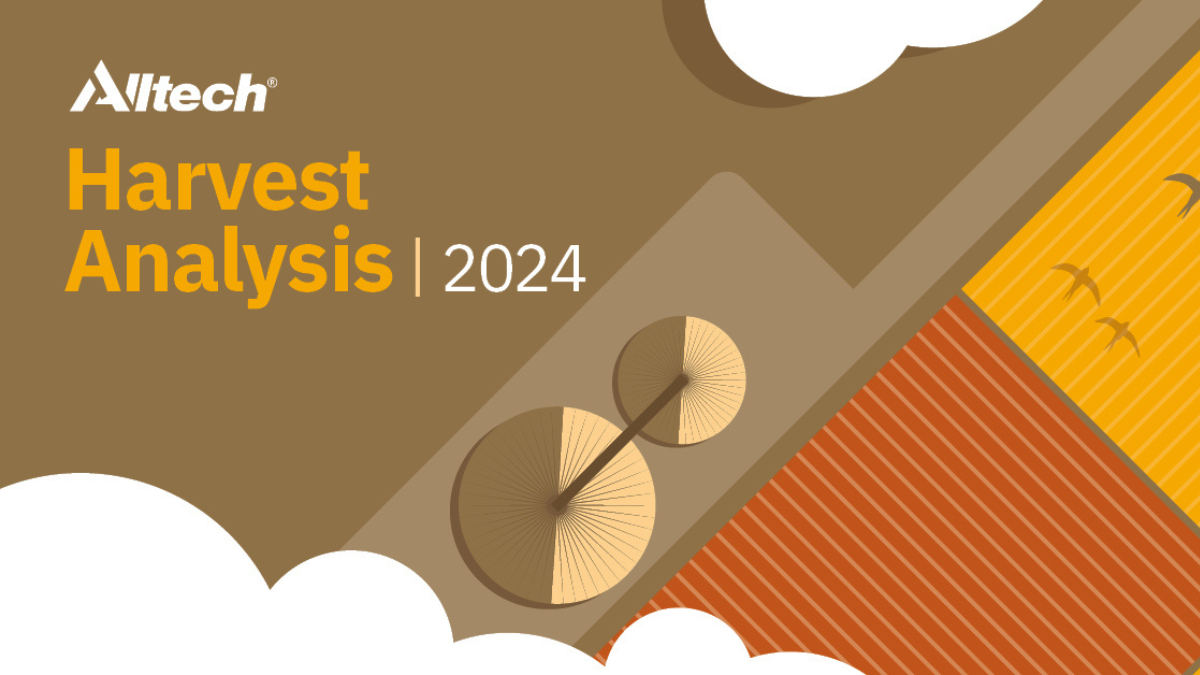
Dr. Sebastian Mejia Turcios is an on-farm support specialist at Alltech with a focus on beef. In this role, he actively engages with others at various levels of the beef industry on topics related to sustainability.
Mejia Turcios is passionate about sharing his knowledge and research with industry leaders, producers, educators and other stakeholders in animal agriculture. Born and raised in Honduras, Mejia Turcios became involved in agriculture at an early age, with a particular love for livestock — which eventually became the focus of his studies. He earned a bachelor’s degree in agronomy from EARTH University in Costa Rica and a master’s degree in animal science from Texas Tech University.
Mejia Turcios completed his Ph.D. in June 2024 at the University of California, Davis, under the direction of Dr. Frank Mitloehner, an internationally known professor of animal agriculture who is also an air-quality expert and director of the CLEAR Center at UC Davis.

Jorge Delgado is an on-farm specialist at Alltech, where he focuses on empowering dairy workers for the benefit of the entire industry.
Originally from Ecuador, Delgado comes from a family of dairy farmers. Before joining Alltech, he offered consulting, sales and training services for an Ecuadoran genetic company and also served as a herd manager for multiple dairies in the United States. He has also worked with Elanco’s Dairy Training Program.
Delgado received a bachelor’s degree in agriculture and dairy science from EARTH University in Costa Rica. He and his family currently live in Minneapolis, Minnesota.

Iniciativa da Alltech Crop Science e Ideagro, #SOS—Safeguard Our Soils oferece a toda a cadeia do agronegócio conteúdos baseados em ciência, pesquisa e boas práticas agrícolas
No Dia Mundial do Solo, celebrado nesta quinta-feira, 5 de dezembro, a Alltech Crop Science (ACS) e a Ideagro anunciam o lançamento da plataforma #SOS—Safeguard Our Soils, uma iniciativa que busca conscientizar sobre a importância da saúde do solo para a sustentabilidade agrícola e a segurança alimentar.
A saúde do solo é fundamental para uma agricultura produtiva e sustentável. No entanto, solos em todo o mundo enfrentam ameaças crescentes, como erosão, compactação e perda de nutrientes. Esses desafios comprometem não apenas a produção de alimentos, mas também a biodiversidade e os ecossistemas que sustentam a vida no planeta. Regenerar e proteger os solos é uma tarefa urgente para garantir sua fertilidade e o bem-estar das gerações presentes e futuras.
#SOS—Safeguard Our Soils é uma plataforma que oferece conteúdos baseados em ciência, pesquisa e boas práticas agrícolas. A iniciativa destaca os solos supressivos, ricos em microrganismos benéficos que fortalecem os cultivos, combatem doenças de forma natural e reduzem a necessidade de insumos químicos.
"Na Alltech Crop Science, somos especialistas em saúde do solo e estamos comprometidos com a promoção de solos supressivos por meio de estratégias que conectam ciência e agricultura", afirma Andy Thomas, CEO da ACS. "Essas tecnologias ajudam os agricultores a adotar práticas sustentáveis e rentáveis, melhorando a qualidade dos cultivos e apoiando os ecossistemas. Solos supressivos não são apenas uma meta, mas uma realidade que podemos alcançar com as ferramentas e a visão adequadas."
A Ideagro, líder em pesquisa aplicada em fermentação, desempenha um papel crucial nessa iniciativa. "A microbiologia é a base para transformar solos em ecossistemas vivos e resilientes. Na Ideagro, investigamos e aplicamos soluções bioestimulantes baseadas em microrganismos obtidos por fermentação de precisão, para alcançar solos supressivos", explica Pedro Palazón, CEO da Ideagro.
A #SOS busca impactar não apenas agricultores, mas também consumidores e empresas do setor agroalimentar, promovendo um entendimento comum sobre a importância dos solos vivos e equilibrados. "O caminho para o futuro exige um esforço coletivo. Agricultores, pesquisadores e líderes do setor devem trabalhar juntos para defender a regeneração do solo como um objetivo compartilhado", reforça Thomas. "#SOS—Safeguard Our Soils reflete nosso compromisso de fornecer informações atualizadas sobre solos e microbiomas, promovendo a colaboração e a inovação para criar uma agricultura mais resiliente para as futuras gerações."
O Dia Mundial do Solo é uma oportunidade ideal para refletir sobre a conexão entre solos saudáveis e um futuro sustentável. "Com o lançamento de #SOS, buscamos incentivar um diálogo aberto e acessível para todos, ajudando a construir sistemas agrícolas mais resilientes", conclui Andy Thomas.
Para mais informações sobre a iniciativa e para participar do movimento global em prol dos solos, visite www.safeguardoursoils.com ou siga as redes sociais da Alltech Crop Science e da Ideagro com a hashtag #SOS—SafeguardOurSoils.
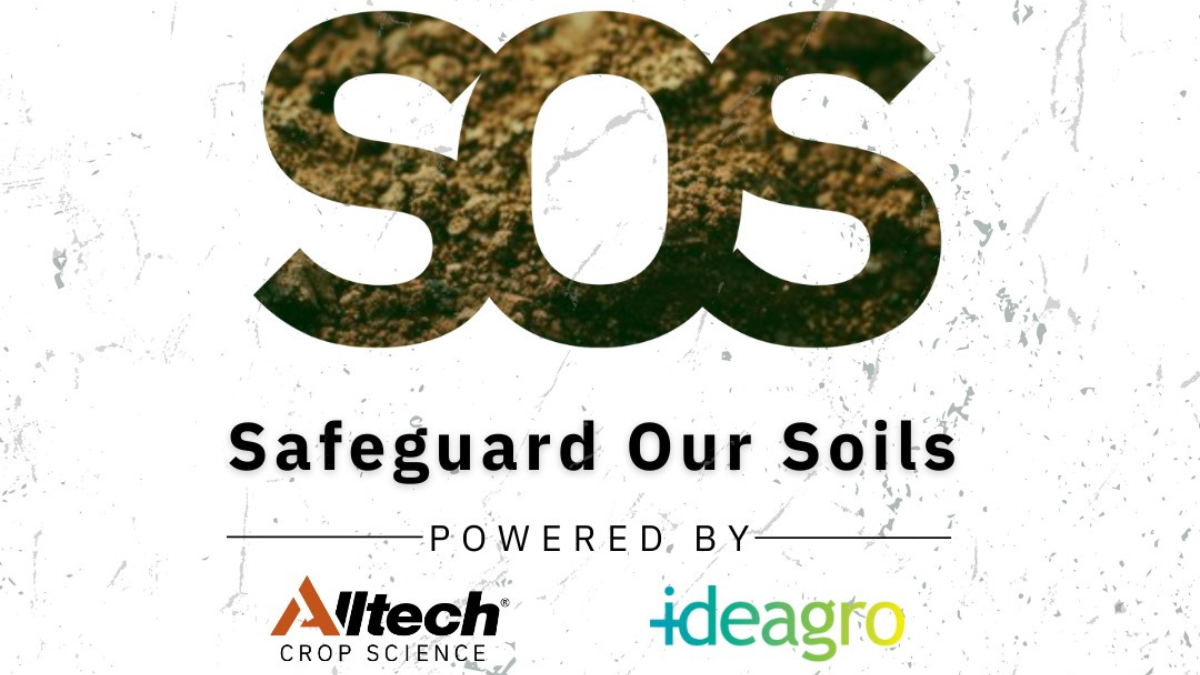
El bienestar animal incluye el bienestar físico y mental de los animales, garantizando que reciben una nutrición y , alojamiento adecuados, así como asegurando la prevención de enfermedades y el tratamiento cuando es necesario. Unas correctas normas de bienestar permiten a los animales vivir sin dolor, miedo ni angustia y expresar sus comportamientos naturales, en consonancia con las Cinco Libertades de los Animales, conjunto de principios ampliamente reconocidos en los programas de evaluación del bienestar y la calidad de vida.
La concienciación de los consumidores y su preocupación por el bienestar de los animales han ido en aumento en todo el mundo. Impulsado por un mayor acceso a la información y un creciente énfasis en el consumo ético las estadísticas demuestran que el bienestar de los animales es un factor importante en las decisiones de compra de los consumidores:
Estas estadísticas subrayan la importancia del bienestar animal para los consumidores y ponen de relieve la necesidad de que las empresas adapten sus prácticas a sus expectativas.
El bienestar animal repercute en la calidad, seguridad y sostenibilidad de los alimentos. Las Cinco Libertades, entre ellas la de "estar libre de dolor, lesiones y enfermedades", ponen de relieve el vínculo entre salud y bienestar animal reconocido por la OIE, la FAO y la EFSA. Las buenas prácticas de bienestar se traducen en animales más sanos que producen carne, leche o huevos de mejor calidad, reducen la incidencia de enfermedades, minimizan el uso de antibióticos y disminuyen el riesgo de resistencia a los mismos. Además, las prácticas sostenibles de bienestar ayudan a reducir la huella medioambiental de la producción ganadera al promover un uso eficiente de los recursos.
Las micotoxinas, compuestos tóxicos producidos por ciertos hongos, amenazan la salud y la productividad de los animales al causar problemas como inmunosupresión, daños orgánicos y reducción del rendimiento reproductivo, con casos graves que provocan un aumento de la mortalidad. Los metaanálisis de Alltech sobre pollos de engorde, gallinas ponedoras y cerdos con 56 ensayos con 15.246 animales demostraron que el uso de adsorbentes eficaces, como el extracto de pared celular de levadura, durante la exposición a micotoxinas mejoraba la salud de los animales, reducía los problemas de crecimiento, mejoraba la conversión alimentaria y disminuía las tasas de mortalidad.
La cojera es uno de los principales problemas de bienestar del ganado, ya que afecta a la movilidad, a la productividad y a el bienestar general. Un estudio realizado en un cebadero canadiense reveló que las cojeras representaban el 40% de los problemas de salud tratados. El zinc (Zn) es vital para la queratinización, y unos niveles bajos de Zn pueden provocar una queratina de mala calidad, trastornos en los cascos y cojera. La suplementación con Zn orgánico biodisponible puede mejorar la queratinización de los cascos y ayudar a prevenir la cojera gracias a una mejor absorción y utilización por el organismo.
La mastitis, una inflamación de la glándula mamaria, es una enfermedad costosa en las vacas lecheras, que provoca dolor, reduce la producción de leche y aumenta los costes veterinarios. Los enfoques eficaces contra la mastitis implican mejorar la función inmunitaria y promover la salud y la higiene de la ubre. La suplementación de las vacas con selenio orgánico redujo significativamente los casos de mastitis subclínica (Figura 1) y disminuyó el recuento de células somáticas, lo que indica una mejora de la salud de la ubre de las vacas lecheras.
Figura 1 - Número de cuartos mamarios por nivel de mastitis subclínica (determinada por CMT) en vacas lecheras suplementadas con selenio orgánico o inorgánico.

Una salud intestinal óptima es esencial para el bienestar general y la productividad del ganado. Un intestino sano favorece la digestión y la absorción de nutrientes, promueve la función inmunitaria y reduce el riesgo de enfermedades. Se ha demostrado que determinados aditivos alimentarios derivados de la levadura reducen las tasas de morbilidad y mortalidad de los cerdos de cría, al favorecer la salud intestinal y la respuesta inmunitaria. Fomentar un entorno intestinal sano puede mejorar el bienestar y el rendimiento de los animales.
El bienestar animal es un aspecto crucial de la ganadería moderna, centrado en el trato ético de los animales para garantizar su salud y bienestar. Ante la creciente demanda de los consumidores de normas de bienestar más estrictas, el sector agroalimentario está adoptando soluciones innovadoras para mejorar el bienestar de los animales en toda la cadena de valor, desde los ganaderos hasta los minoristas, estableciendo nuevos puntos de referencia para un futuro más ético y sostenible en la producción de alimentos.
Autor:
Dra. Anne Koontz, Directora de Investigación, Alltech
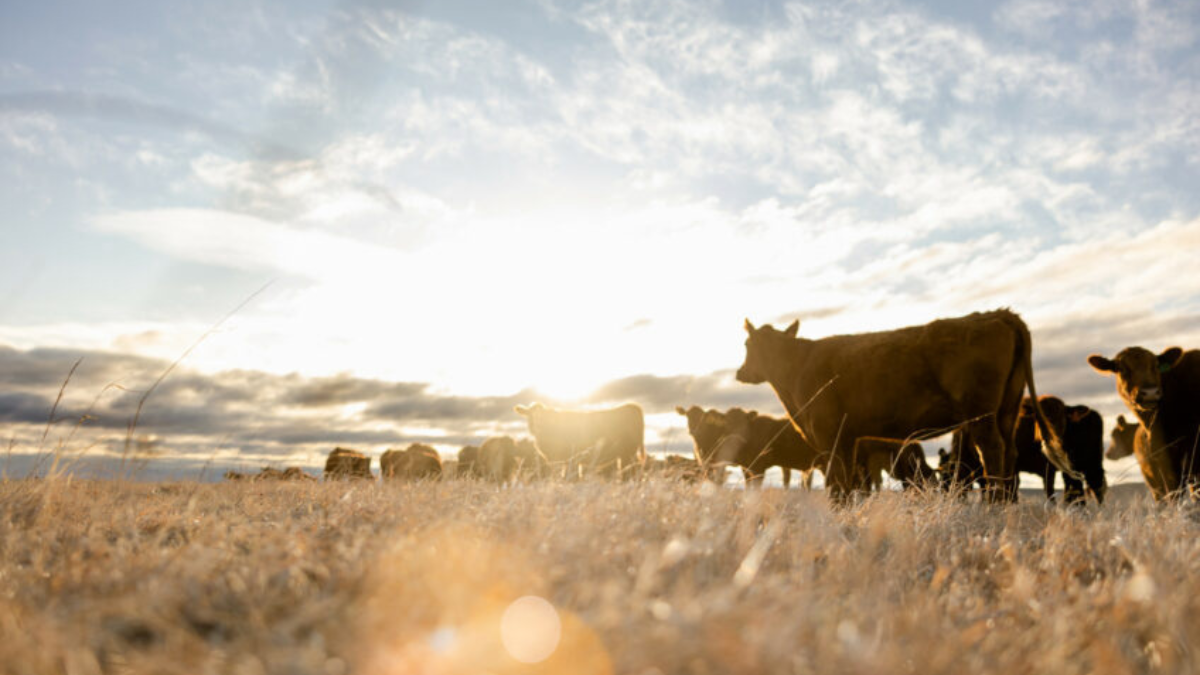
Basın Bülteni
Mayıs, 2023
Alltech, 2006 yılında kurulmuş İsviçre merkezli bir şirket olan Agolin’in çoğunluk hisselerini satın aldığını duyurdu. Hayvan beslenmesinin global lideri, ‘Bolluk Gezegeni için Birlikte Çalışmak’ (Working Together for a Planet of Plenty™) taahhüdünü paylaşan şirketlerle ortaklık yapmaktan gurur duyuyor. Animals dergisindeki 2020 yılı meta-analizine göre, yüksek kaliteli uçucu yağ karışımlarını içeren Agolin ürünlerinin et ve süt üretiminde yem alımını ve performansı optimize ettiği bilimsel olarak kanıtlanmıştır.
Uluslar arası akredite kuruluşu Carbon Trust, Agolin® Ruminant’ın metan salınımını azalttığını doğrulamış ve bu konuda Ekim 2020'de California Üniversitesi, Davis, ürünün etkilerini detaylı olarak inceleyen bir makale yayınlamıştır.
Alltech'in başkanı ve CEO'su Dr. Mark Lyons, Agolin'in uçucu yağ karışımlarının, Alltech'in Yea-Sacc® ve Optigen® gibi kanıtlanmış beslenme teknolojilerinin tamamlayıcısı olduğunu belirtiyor. “Hükümetler, tüketici markaları ve perakendeciler çevresel etkilerini azaltmak için önemli taahhütlerde bulunuyorlar. Bu taahhütler çiftçilere ve çiftlik sahiplerine kadar uzanıyor. Bizler Alltech’te, çevresel ayak izlerini azaltırken daha fazla süt ve et elde etmeleri için benzersiz beslenme teknolojilerimizle çiftçileri desteklemeye kendimizi adamış bulunuyoruz."
Alltech ve Agolin arasındaki iş birliği, çiftçileri sürdürülebilirlik hedeflerine ulaşmaları için güçlendirirken aynı zamanda sürülerinin performansını ve tedarik zincirlerinin karlılığını destekleyecek. Agolin'in esansiyel yağ karışımlarının Alltech'in beslenme teknolojileri ile bir araya getirilerek bir sinerji oluşturulması ve çiftçilere çok önemli faydalar sunulması hedefleniyor. Bu faydalar arasında gelişmiş hayvan refahı, daha yüksek yem verimliliği ve dönüşümü, daha fazla et ve süt üretimi, artan karlılık ve azaltılmış çevresel ayak izi yer alıyor. Ortaklar ayrıca, Alltech'in kanıtlanmış beslenme çözümleri ve Agolin'in esansiyel yağ karışımlarını bir araya getiren yeni teknolojiler geliştirme fırsatlarını keşfedecekler. Avrupa, Asya ve Kuzey Amerika'da önemli bir varlığı bulunan Agolin’in çoğunluk hisselerinin Alltech’e geçmesiyle Agolin çözümlerinin başka pazarlardaki kullanılabilirliği de mümkün olabilecek.
Agolin SA'nın genel müdürü Kurt Schaller, "Agolin olarak, Alltech'in teknik uzmanlığı ve global erişimi aracılığıyla sinerji içinde büyüyen bu stratejik ittifaktan çok memnunuz. Bu, işimiz için yeni bir dönemi temsil ediyor, sektörümüzde bir ilke imza atıyoruz.” dedi.
Agolin, etkili ve kullanımı kolay bitkisel aktif içeriklere dayalı yenilikçi yem katkı maddeleri üretmek ve pazarlamak için araştırma ve geliştirmeye odaklanmaktadır. Şirketin uçucu yağ karışımları, güvenliği sağlayan ve izlenebilirliği garanti eden güçlü bir kalite yönetim sistemi (FAMI-QS) ile desteklenmektedir.
Agolin Hakkında
Agolin 2006 yılında kurulmuş İsviçre merkezli bir şirkettir. Kullanımı kolay, güvenli ve etkili olduğu bağımsız araştırmalarla kanıtlanmış bitkisel aktif içeriklere dayalı yenilikçi yem katkılarının araştırma, geliştirme, üretim ve pazarlamasını gerçekleştirmektedir.
Şirket, Avrupa, Asya ve Kuzey Amerika dahil birçok pazarda faaliyet göstermektedir. AB Özel Yem İçerikleri ve Karışımları Derneği olan FEFANA'nın üyesi olan Agolin, kalite yönetim sistemi (FAMI-QS) ile güvenliği sağlayan ve izlenebilirliği garanti eden bir şirkettir.

Fotoğraf Soldan Sağa: Agolin Ticari Direktörü Michael Roe; Agolin'in Genel Müdürü Kurt Schaller; Agolin Teknik Direktörü Beatrice Zweifel; ve Alltech’in Başkanı ve CEO'su Mark Lyons.
How much does the small producer mean to the overall health of the U.S. beef industry, local economies and consumer education efforts? More than you think.
[DUNBOYNE, Ireland] – Alltech, a global leader in biotechnology, has released the complete Alltech 2024 European Harvest Analysis report. The comprehensive final report shows that a combination of heavy early-season rains and late-season droughts has created distinct challenges for crop producers in Central and Southeastern Europe and indicates that overall risk is moderate to high.
“Overall, European grains may have similar or higher risk this year compared to last year. Type B trichothecenes are predominant mycotoxins in corn silage and straw, while the other Penicillium mycotoxins dominate grass silages,” said Dr. Radka Borutova, global technical support for the Technology Group at Alltech. “Together, these mycotoxins could impact animal performance and health, so producers should be aware of these challenges in order to be proactive in their mycotoxin management strategies.”
The final mycotoxin risk will ultimately depend on the animal species and groups being fed and the mycotoxin concentrations and combinations in the finished diet.
Mycotoxins, which are natural substances produced by moulds and fungi, are more prevalent — and more of a problem in agriculture — than ever before. More than 95% of crops today are contaminated with at least one mycotoxin, and usually with two or more. Because these toxins are difficult to detect, they can cause significant damage to animal health before producers even realize they are present. A proactive mycotoxin management programme is essential, and the first step is learning which mycotoxins pose the highest risk in specific regions, crops and species.
The Alltech 2024 European Harvest Analysis programme tests samples of new-crop grains and forages collected from farms or animal feed production sites in 20 countries, ensuring an accurate picture of mycotoxin contamination across the continent. All samples are tested at the leading-edge Alltech 37+™ lab, which can detect the presence of 54 mycotoxins. Corn samples from central and southern Europe are also tested in collaboration with SGS, a global leader in mycotoxin testing and certification.
Other key results from the Alltech 2024 European Harvest Analysis include:
Barley
Samples tested show an average of 6.8 mycotoxins per sample, with 98% containing multiple mycotoxins. The highest-risk mycotoxins are type B trichothecenes, type A trichothecenes and ergot alkaloids.
Wheat
Samples show an average of 7.6 mycotoxins per sample, with 99% containing multiple mycotoxins. The most prevalent mycotoxins are type B and type A trichothecenes.
Forages
Forage samples (grass silage, corn silage and straw) show 3.7 mycotoxins per sample on average, with 78% of samples containing multiple mycotoxins. The most prevalent are type B trichothecenes and Penicillium mycotoxins such as penicillic acid, mycophenolic acid and patulin.
On Nov. 21, Alltech hosted “From Field to Feed: 2024 Crop and Mycotoxin Analysis”, a broadcast streamed live from Alltech’s headquarters in Lexington, Kentucky, U.S. During the broadcast, panellists shared valuable insights for managing risks across the supply chain. Here are the key takeaways:
Register online at alltech.com/harvest-analysis to gain access to the recording of the broadcast as well as the full 2024 Alltech Harvest Analysis programme, including the complete European report, which is available now.
For more information about Alltech mycotoxin management solutions, visit knowmycotoxins.com.
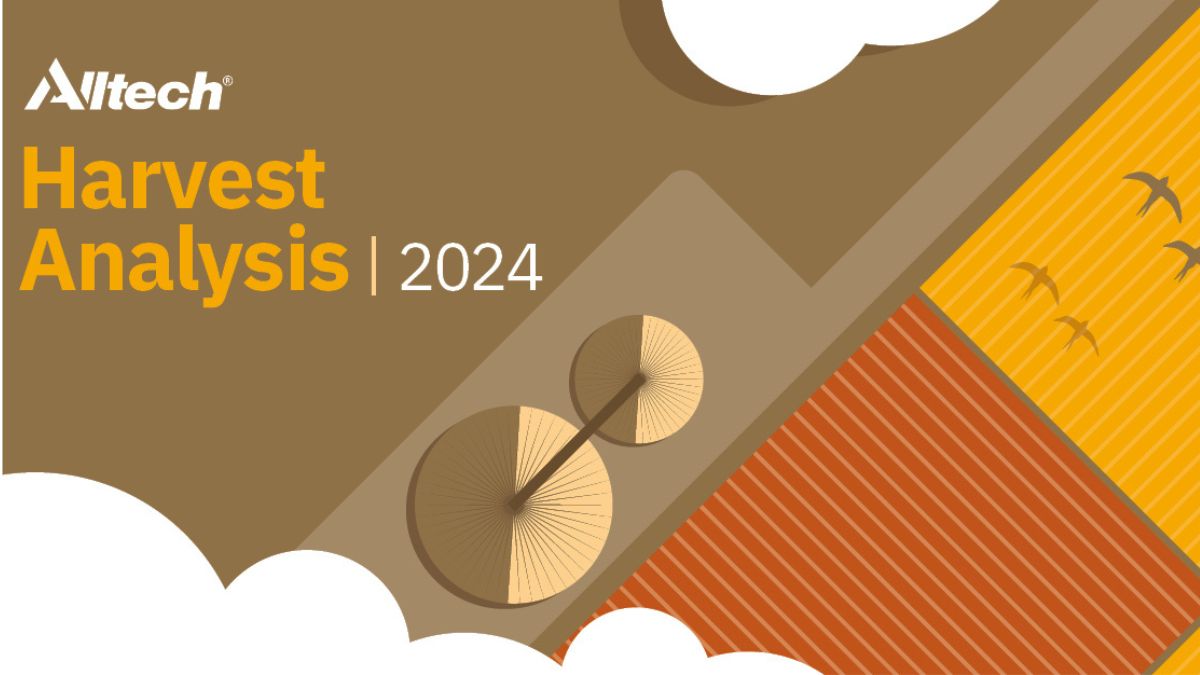
Results from the Alltech 2024 European Harvest Analysis indicate that overall risk is moderate to high.